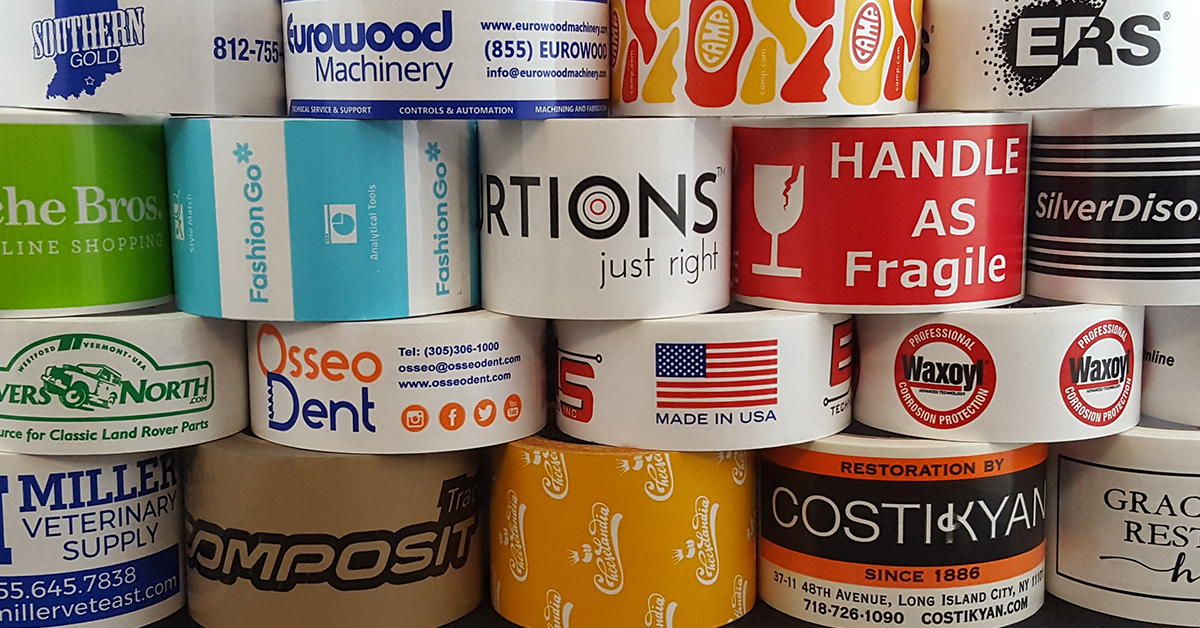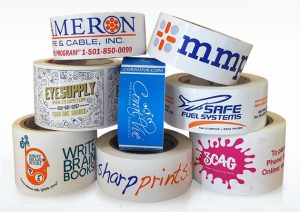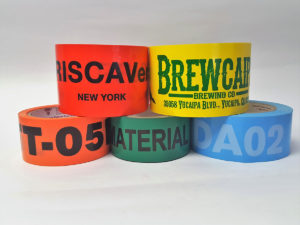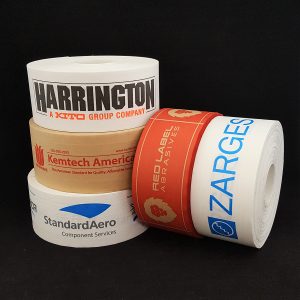Packing Tape 101

Packing tape seems simple: Some plastic – or in some cases, paper – combined with an adhesive to keep a box or other packaging secure during transit.
The truth is much more complicated. Not every tape is the same. Some varieties of printed packing tape are better suited to certain jobs than others.
In this blog post, we’ll break down the basics of our tapes and which types of tape work best for different applications.
What does a “mil” mean when it comes to tape?
The thickness of a piece of tape is measured in mils. One mil is the equivalent of one-thousandth of an inch. The more mils, the thicker the tape and the more aggressive the adhesive.
What types of adhesives do you use?
We use hot melt adhesive on our PVC and polypropylene tape, but also provide acrylic adhesive. We recommend calling to learn more about the price differences between the two.
 What’s the difference between PVC and polypropylene tape?
What’s the difference between PVC and polypropylene tape?
Although they’re both plastics, PVC and polypropylene are very different tapes.
Polypropylene is the most popular of our printed packing tapes and perhaps the most common tape variety. If you walked into an office supply store and asked for a roll of packing tape, there’s a good chance you’d leave with polypropylene.
What makes it so popular? A few reasons:
- It’s typically offered at a lower price than other tapes.
- It’s very good for printing, particularly if your project will have a long print run, thanks to the use of a polymer plate, which allows you to preserve the details on your image.
- It’s a thicker and therefore sturdier tape – usually around 1.9 to 2.9 mils – which makes it a good choice if you need to ship heavy packages.
 PVC tape may not be as popular as polypropylene, but it’s still a versatile, effective choice for your printed packing tape.
PVC tape may not be as popular as polypropylene, but it’s still a versatile, effective choice for your printed packing tape.
It’s thick and strong and easy to manage. It’s less likely to get stuck to itself than polypropylene. And if that happens, it’s easy to get it unstuck.
PVC tape requires more pressure to stick, but once it sticks it does so aggressively and will adhere to a greater variety of surfaces than polypropylene.
Finally, it’s a quiet tape. Polypropylene tape makes a crackling sound when it unspools, while PVC unrolls and adheres quietly.
What about paper tape?
 There’s a lot to love about paper tape. It’s an environmentally friendly option! As a water-activated tape, it adheres neatly to packages aided by fiberglass threads that provide another layer of security.
There’s a lot to love about paper tape. It’s an environmentally friendly option! As a water-activated tape, it adheres neatly to packages aided by fiberglass threads that provide another layer of security.
And it’s tough: once paper tape seals, there’s no unpeeling it. You’ll need to rip it open the way you would an envelope.
If there’s a downside to paper tape it’s the way it’s applied. Rather than walking around with a roll or a tape gun, you’ll need to affix paper tape with a machine.
Not sure what time of printed packing tape is right for your product? Turn to Phoenix Tape. We’ve spent more than 35 years helping businesses like yours choose the best – and best-looking – tape to secure their packaging and promote their brand. Contact us today to learn more.

 1-800-992-1522
1-800-992-1522  My Account
My Account 
 Register / Login
Register / Login 
